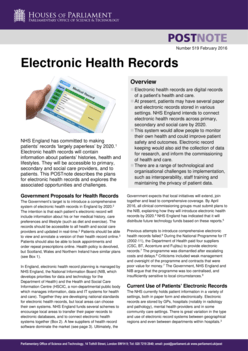Hello! You're looking at a policy document report on Overton
We track government policy, guidelines, think tank research, working papers and more to help our customers see the impact and influence of their work. Are you interested in seeing what information we have to offer? Request a free trial to our platform.
If you fund, produce or manage research or work to influence policy, we'd love to talk. Learn more on our homepage.

Identifiers
Electronic Health Records
Electronic Health Records
Topics in this document
Related SDGs
Target 3.8
Achieve universal health coverage, including financial risk protection, access to quality essential health-care services and access to safe, effective, quality and affordable essential medicines and vaccines for all
Cites research funded by
Citations
Recognized names mentioned in this document
Overton only tracks names from certain institutions. Names must have been cited in at least one policy document and their corresponding affiliation has to be found nearby - you can find more details on the help page.
